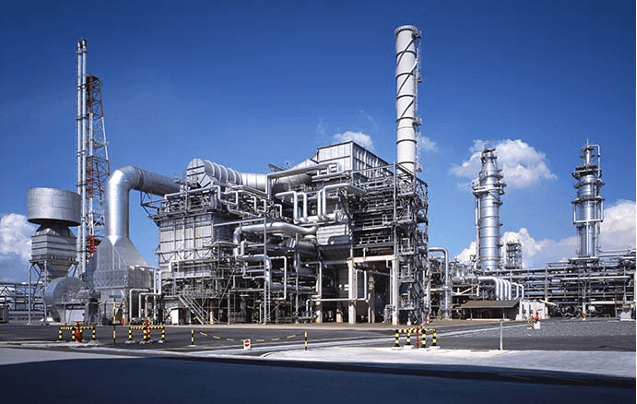Petrochemical Industry Overview
Within the global conversation of sustainable mass production, petrochemicals allow for a cost-effective and limited environmental impact. Our growing population and demand for everyday goods come with increased production and especially petrochemicals. The significance of this industry leads us to look closely at the global petrochemical industry outlook for 2022.
What is the meaning of Petrochemicals?
Defined as a large group of chemicals extracted from natural gases and petroleum, petrochemicals are used in most of our daily items. Petrochemicals produce gases including ethylene, propylene, and benzene which are used to produce commodities including cosmetics, plastics, medical equipment, and tires, and provide product features such as water resistance.
- Where do petrochemicals come from?
Petrochemicals are produced in petrochemical plants. These facilities use high temperatures to crack links between carbons. These broken links create new ones resulting in new chemical combinations that create petrochemicals. Petrochemical products are derived from crude oil and natural gas through the distillation of crude oil and petroleum gases.
- Where do you find Petrochemicals?
A large portion of the good we use daily are made with a set of chemical compounds that we refer to as petrochemicals. Petrochemicals can be found in cosmetics, electronics, packaging, textiles, and toiletries. They can also be found in:
- Transportation
- Resins, films, plastics in medicine,
- Food preservatives,
- Agriculture (pesticides and fertilizers),
- Carpeting, detergents,
- Rubber,
- Synthetic fibers,
- Adhesives,
- Dyes,
- Paints and coatings,
In manufacturing, petrochemicals can be found in:
- Solar panels,
- Thermal insulation for buildings,
- Electric vehicle parts,
- Batteries,
- Wind-turbine blades
- Why Petrochemicals are so important?
Petrochemicals are already a major element in the global energy system with growing importance. Plastic has shown a larger increase in demand compared to other bulk products made with petrochemicals such as steel, aluminum, or cement. This increase in demand makes petrochemicals crucial for filling such demand.

The Global Petrochemical Industry in 2022
With the drastic Russia-Ukraine war taking place in 2022, most industries including petrochemicals were affected globally. Petrochemical companies around the world were expected to face challenges from the impact of the war as well as COVID-19.
The global market for petrochemicals was predicted to be worth USD 725,380 million in 2022 and is anticipated to grow at a rate of 4.6% between 222 and 2028 to reach USD 950,070 million.
The Asian-pacific market stands to be the largest petrochemical market today, being valued at more than half of the global market size.
-
Global Petrochemical Market Players and Projects
Some of the key players in the petrochemical market include Total, British Petroleum, ExxonMobil, China National Petroleum Corporation, Aramco, and Anchorage Investments.
Notable petrochemical projects of 2022 include Anchorage Investments’ Anchor Benitoite project. The company began in 2022 to shortlist companies for the engineering, procurement, and construction of the petrochemical complex to be located at the southern terminus of the Suez Canal.

-
Global Petrochemical Trading
European consumers began rejecting Russian goods as of February 2022. New trade flows for some petrochemical products, particularly polymers.
Prices of petrochemicals, including ethylene, propylene, and benzene fluctuated in 2022 due to global events that have impacted the market. Ethylene is the most widely utilized petrochemical globally since polyethylene is used to make a popular plastic that accounts for 30% of all thermoplastic manufacturing. In 2021, the average price of ethylene worldwide amounted to 1,000 USD per metric ton in contrast to the following year, where the average cost of ethylene had increased by 23% to reach 1,235 USD per ton.
Propylene, the second most-consumer primary petrochemical worldwide, amounted to 983 USD per metric ton in 2021 and has increased from 778 USD the previous year. Monthly propylene prices in 2022 showed a largely upward trend reaching their peak in March of that year at 1,317 USD per metric ton.
Another most used product in the petrochemical sector is benzene, making up around 10% of primary petrochemical consumption globally. The price of benzene climbed quickly during the last two years, from a low of 498 USD per metric ton to an average of 933 USD per ton in 2021. In June 2022, the price per metric ton averaged 1,240 USD per month, continuing the upward trend that began in 2021. The price registered in the same month two years prior was roughly three times lower.
To conclude, the global petrochemical industry outlook for 2022 shows dynamic fluctuation in projects and trading prices. The market was affected by world crises, including the Russian-Ukrainian war and COVID-19, price variations, and petrochemical product demand.
Petrochemicals deserve our close attention due to their significance in our modern society. They are present in nearly most goods, including cosmetics, medical equipment, and automotive parts. We’ve defined petrochemicals as products of crude oil and natural gases created in petrochemical facilities where chemicals are deconstructed to build new chemical compounds. Their production process results in popular products such as ethylene, propylene, and benzene, which are later used to manufacture plastics, rubbers, as well as other in-demand materials. Additionally, we’ve noted that the demand for plastics grew remarkably compared to other mass-produced materials such as steel.
The global petrochemical market continues to witness exponential growth with key players such as Total and Anchorage Investments, among others. Petrochemical projects continue to launch to supply an increasing global petrochemical product demand.
